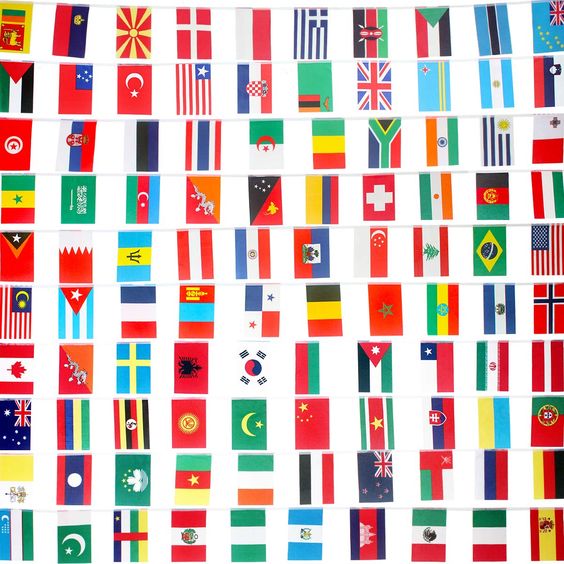Which Countries are Multiple Parties
Multiple-party systems are prevalent across the globe, with countries in Europe, Asia, Africa, and the Americas embracing this political model.
Europe
Several European countries, including Germany, France, Italy, and the Netherlands, operate under multiple-party systems. These nations feature a diverse political landscape with several parties competing for representation in government.
Asia
Countries such as India, Japan, South Korea, and Israel have robust multiple-party systems. In these nations, a multitude of political parties play significant roles in shaping government policies and decision-making processes.
Africa
Many African countries, including South Africa, Nigeria, Kenya, and Ghana, have embraced multiple-party systems. These nations often witness intense political competition among various parties vying for control of government institutions. Read about What is Moral Diplomacy
Americas
In the Americas, countries like Canada, Mexico, Brazil, and Argentina operate under multiple-party systems. These nations showcase the dynamic nature of democracy, with multiple parties offering diverse political platforms to voters.
Multiple Party Systems
A multiple-party system is a political system where several political parties have the capacity to gain control of government offices, separately or in coalition. Unlike two-party systems, which are prevalent in countries like the United States and the United Kingdom, multiple-party systems feature a more diverse array of political voices.

Understanding Multiple Party Systems
Definition and Characteristics
Multiple-party systems are characterized by the presence of three or more significant political parties competing for power and influence within the government. These parties often represent a broad spectrum of ideologies and viewpoints, offering voters a more diverse range of options during elections. Discover about What are the 16 Concepts of Global Politics
Types of Multiple Party Systems
Multiple-party systems can take various forms, ranging from moderate multiparty systems to highly fragmented ones. In moderate multiparty systems, a few dominant parties typically compete for power, while in fragmented systems, power is dispersed among numerous smaller parties.
Advantages of Multiple Party Systems
- Representation: Multiple-party systems provide voters with a broader range of political ideologies and viewpoints, ensuring better representation for diverse segments of society. Learn about What are the 4 Types of Politics
- Checks and Balances: The presence of multiple parties fosters competition and accountability within the political system, reducing the risk of authoritarianism and abuse of power.
- Policy Innovation: Different political parties bring forth diverse policy proposals and solutions, leading to greater innovation and adaptability in addressing societal challenges.
Challenges of Multiple Party Systems
- Coalition Building: In countries with highly fragmented party systems, forming stable governing coalitions can be challenging, leading to political instability and gridlock.
- Policy Gridlock: Disagreements among multiple parties may result in legislative gridlock, hindering the government’s ability to implement effective policies and reforms.
- Polarization: A multitude of parties with divergent ideologies can contribute to heightened political polarization and societal divisions.
Examples of Successful Multiple Party Systems
Countries like Germany, India, and Canada have demonstrated the effectiveness of multiple-party systems in fostering stable governance and promoting democratic values. These nations have successfully navigated the complexities of coalition politics while maintaining political stability and economic prosperity.
Conclusion
Multiple-party systems play a vital role in promoting democracy, ensuring representation, and fostering political pluralism. While they present challenges such as coalition building and policy gridlock, the benefits of diverse political participation outweigh the drawbacks. By embracing multiple-party systems, countries can strengthen their democratic institutions and promote inclusive governance.
FAQs
- Are two-party systems more stable than multiple-party systems?
- While two-party systems may offer stability, multiple-party systems provide greater representation and diversity of political viewpoints.
- How do countries prevent political fragmentation in multiple-party systems?
- Countries often implement electoral reforms and coalition-building mechanisms to mitigate political fragmentation and ensure stable governance.
- Can multiple-party systems lead to political extremism?
- While diverse political ideologies may exist within multiple-party systems, strong democratic institutions and public engagement help mitigate the risks of political extremism.
- What role do minor parties play in multiple-party systems?
- Minor parties can influence policy debates, serve as a voice for marginalized groups, and sometimes hold the balance of power in coalition governments.
- How do multiple-party systems impact voter decision-making?
- Multiple-party systems offer voters a wide array of choices, requiring them to carefully consider each party’s platform and ideology before casting their ballots.







